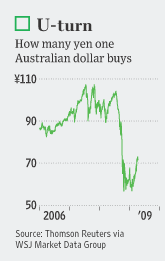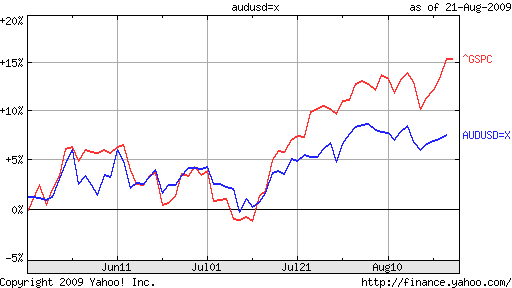Information About Margin In Forex Trade
Several forex traders are doubtful while applying the margin. But after that, they have small option and the majority of them have to employ the margin to do foreign trade.
One single lot includes 100,000 units of a currency in a normal account. One lot in Mini account may possibly include 10,000 units of a particular currency. This, as most of you would optimistically have the same opinion, is important cash to keep in an account. As well, the majority of people have been look to trade above one lot at a time.
And nearly all Forex trading firms need traders to have admission to margin funds. All in all there is just no options which will aid us turn clear of applying the margin in currency trading.
Significant aspect for a forex trader to bear in mind is that there are reasonable ways to employ the margin gainfully in addition to sensibly.
Margin is customizable: Margin is bendable and can be applied till the level at which the trader is comfy and thinks the requirement to exercise it. If the trader desires to play it protected, 5% to 10% of margin is measured comfy. For a trader who is start to taking a few risks, 40% to 50% percent of margin is measured standard or strong.
Therefore, the margin sum for every trade can be customized opening from zero to 100 percent. A person has to think every trade independently and has to create it a division of his long term forex currency trading strategy and create a well-versed verdict about how lot the margin is most appropriate for him.
Simplicity Is The Main Thing To Attain Currency Trading Success
The basis for why several of the traders lose and do not attain currency trading success is regularly attributed to a lack of discipline, though this is not the main cause, it’s just a small part of the trouble.
The main cause is a short of “strong concentration”, this indeed should be looked in to as the majority of traders are ignorant of it.
If you desire to attain currency trading success you require “strong concentration” and this denotes concentrating on how and why forex markets actually function and what you have to do to eventually succeed. The majority of traders just will not follow this and they will lose.
Do your work smartly; don’t make things harder for yourself:
In several industries to attain success the more you place in the more you get out in terms of returns; this is not right in currency trading.
What you require to study is that to attain real good success in currency trading you will have to be working real smart, you must not be playing tough rather you must be applying an easy system that should have you spend less time and better profit.
You can make a better currency trading process in just an hour a day and create triple digit annual gains! Simplicity is the main thing to attain currency trading success.
Trade with likelihood:
These days, there is a massive industry that informs us of analytical theories and functions and you can choose market bottoms and tops with technical correctness.
The other huge fairy tale is day trading.
You can attempt to trade pretty harder as you desire, but the odds are not in your goodwill in day trading, as you will not have sufficient profits to wrap your predictable losses.
You require to trade better in the longer run and this is where the likelihood of success is more and this is one of the single method with which you will land up with success in currency trading.
Some Important Tips For Foreign Currency Exchange
The Foreign Currency Exchange is a stable industry that experiences alterations because of the deviations in the foreign currency conversion rates. You should learn forex from the experience of others. While you aim to study everything out of your forex trading you will not actually recognize how others are creating profits.
To achieve something, you have to continually deal with trade in the forex market. You got to begin and end your trade with respect to the market information and the existing trends at the time of your decision making. Do not stay long expecting the value of the currency to increase to your expectation. It might not work out always. It is better to fix yourself with the market trends.
· Get an idea of the stop loss decision based on the existing situation while you trade. Do not initiate trading while there is a deficiency in liquidity.
· Get an idea of the separate trading systems for the high markets and the low markets. Don’t simply work with just a single trading strategy. Bring out your strategy with a focus and navigate per the market situation.
· Considering the market trend and other factors work in accordance with what your mind states. Decide accordingly on when things are likely bad and which they are right for the trade.
· Differentiate between rumors and real facts in the market. Make your buy and sell decisions accordingly.
· Begin trading after the market has gotten hot in for the day and end your trade before the end of the trading day.
· When it is an over buying of currencies you got to consider ending your trade. Do not do what others are doing all the time. When it is a bull market and the hike is too much it will for sure come down. With changeable foreign currency exchange rates, nothing is going to be steady.
Mediatory Services in Forex Currency Trading
Foreign exchange market (Forex) is the prime financial market in the globe. The overall funds in trade comprise of nearly trillions of US dollars in trade, which is a lot more than the entire amount of stock options and duties of the United States of America.
Forex is a non-stock exchange market that has no physical place. Forex is a banking network consisting of companies, forex brokers, private investors, integrated by one organization of information exchange.
As the Forex exchange trading does not rely on physical place, they trade internationally, all around the clock, with the exception of weekends for the time zone of the country dealing with it.
Foreign exchange covers up markets of most nations with universal platforms for foreign currency exchange trading functions in London, Tokyo and New York.
Major groups of Forex currency trading are:
Insurers – The major group is exporting and importing companies and some of the companies which consist of the few functions in foreign currency. For these partakers in forex, the main objective is to ensure loss minimization in a way keeping away from risks.
Speculators – Personal traders and corporations who are intended to trade foreign currency making profit from foreign currency exchange rates and short-term functions go to this category.
Arbiters – Investors of online forex trading who trade with big amounts of cash to invest and function on two or more markets at the similar time and generally they tend to make profit on the basis of foreign exchange rates.
Forex broker – These are brokers, banking establishments, currency dealers and companies who provide with electronic access to trading platforms and giving mediatory services in currency exchange deals.
Exploit Profit With Forex Trading Tactics
By using a particular set of FOREX trading tactics, you will be able to exploit the profit of trading. With forex trading, you can work in so far for as high as hundred times the total in your deposit account into the trade. So, with a $100 deposit, you will be able to leverage $10,000 into your transaction. With this type of cash backing in a deal, it is easier to finance the transactions that will manipulate healthier results.
Forex trading strategies, like leverage, are employed most of the time to get benefit of short upward turns in currency values. Inspecting closely on how the U.S. dollar balances with the Euro for more than 3 months’ duration might possibly not swank dollar to euro conversion results.
Though, within a particular day or week there could be massive upswings or downswings in value. Applying leveraged funds permit investors to get benefit of these temporary rises and falls.
One more important tactic for forex trading is the stop loss order. This defends the investor by determining and putting a point at which one you will not trade. It allows the investor put a check point for losses. You run the threat of ending a trade that could probably move yet higher, but you as well wrap yourself from a trade that falls far lower the existing value.
Opening up an automatic access order is as well one of the forex trading approaches that will make sure the investor can go into a trade while the price is right. A prearranged price for the foreign currency exchange is set so that the investor automatically goes into the trade at that point.\
CURRENCY TRADING
Forex is also known as foreign currency trading or even just Foreign exchange. In a simpler way it means that a country’s currency is exchanged for another country’s currency. The most common foreign currencies that are traded in the forex are Japanese Yen, Euro, US Dollar, Swiss Franc and British Pound. But among these the US Dollar is the most popularly used currency in the world for almost all the third world countries in their commercial transactions. The above five currencies makes up North American trading of more than 70%. Foreign currency trading is greater than other stock markets and also has a greater liquidity since it has a volume of trading around 50 to 100 times more than the New York Exchange that undergoes the trading of stocks and this New York Stock Exchange has the highest trade volume when compared to other stock markets. The liquidity is mainly because of the nature of currencies and other factors like economical stability that control the currency’s value. Due to this high liquidity and high volatility in the forex market, the forex traders can make profits at least more than five times that a trader does in trading liquid shares in the stock market. There is a great volatility of 500 generated by the foreign currency trading whereas the liquid stocks generate only a volatility of only 60 to 100 and there are no transaction fees and other miscellaneous fees for doing currency trading with iforex.
The Currency Trading has gone up to $3.2 trillion every day in the present trend in the world and the technology advancement like internet also has been its key to development. The other reason is that it is recession resistant and has greater benefits than other financial investments such as stocks and bonds.








 Islamabad Time
Islamabad Time
